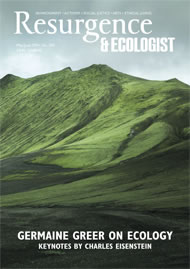A form of science illiteracy exists amongst scientists and always has done. In the 16th century Copernicus’ colleagues outright rejected his suggestion that the Earth revolves around the Sun. Today most scientists reject the idea that mind or consciousness can exist independently of the brain or body. Instead the scientific community follows the unproven assumption that the brain produces consciousness.
Data that offends this ‘in vogue’ intelligence is often ignored. In the 18th century pathological disbelief caused the discoverer of oxygen, Antoine Lavoisier and other scientists, to deny with absolute certainty the existence of meteorites. Lavoisier assured his colleagues at the French Academy of this on the grounds that, “Stones cannot fall from the sky!” in spite of hold-in-your-had evidence to the contrary.
Science historian Thomas Kuhn described this fact-denying habit in his landmark publication The Structure of Scientific Revolutions. New scientific theories do not emerge into the mainstream from the straightforward accumulation of facts, but only when whole sets of intellectual circumstances change. Sometimes the resistance to change can be to the embarrassment and downfall of outspoken thinkers of the time. In 1848, Hungarian physician Ignaz Semmelweiss produced overwhelming evidence for the effectiveness of hand washing by obstetricians in reducing maternal mortality following childbirth. His colleagues didn’t believe it. At that time, germ theory didn’t exist and the evidence didn’t matter. Worse, Semmelweiss was hounded out of Vienna and eventually committed suicide in Budapest.
Hopefully, the author of One Mind, Larry Dossey is immune to such attacks. He has compiled a set of case histories (or anecdotes, as sceptics might call them), to support his thesis that mind is not localised to specific points in space such as the brain or to specific points in time. These seem to demonstrate a direct mind-to-mind connection between individual people – an overlapping consciousness.
The fact that these phenomena occur in animals as well as humans is important and Dossey draws heavily on research into the animal kingdom carried out by biologists such as Rupert Sheldrake. The group behaviour of flocks, herds and schools often cross the invisible boundary between classical physics and quantum physics. When rapid exposure films of large flocks of birds are slowed down, neighbour-to-neighbour changes in behaviour occur in 15 thousandths of a second. The changes can spread in a near simultaneous wave throughout. However, under laboratory settings the birds require 38 thousandths of a second to respond to visual stimulus. Similarly, fish that have been temporarily blinded or made insensitive to nearby pressure changes in water still have the ability to school with other fish. Sheldrake and others find evidence suggesting that a field-like, non-sensory intelligence – part of a ‘One Mind’ – can explain these sorts of organised behaviours.
The introduction to this book had me hooked. It stands out from hundreds of other titles on the similar theme of science and spirituality in that it is written by an experienced medic and has as its overarching imperative the ecological health of our planet at its heart.
Dossey’s frequent use of sarcasm when referring to disbelieving scientists may seem harsh to people unaccustomed to the day-to-day realities of science but having worked in medical research myself, I smiled at the statement “Science is like a sausage: while you may like it, you may not want to tour the factory and see how it is made.” Taken as a whole the book left me feeling humbled by Nature and human abilities. I began to view things I take for granted with a renewed sense of mystery. Indeed, One Mind may contribute to one of Kuhn’s paradigm shifts from a continuity of science committed to making Nature productive to one that makes Nature sustainable.







